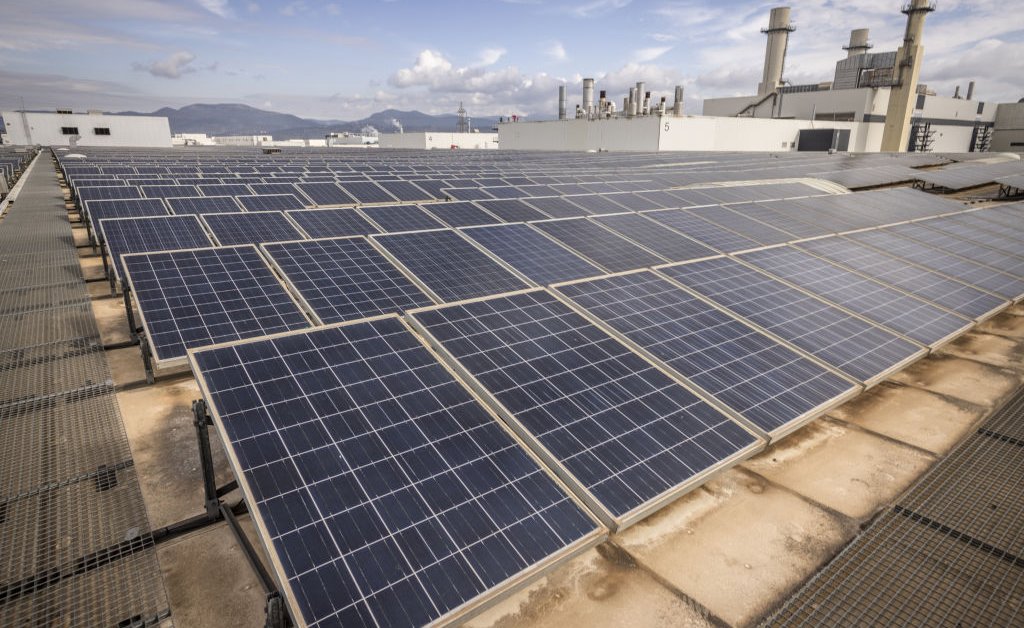More Than AI: The Looming Energy Crisis Fueled by AI and Beyond
Editor's Note: The surging demand for energy, driven by advancements in artificial intelligence and other technological leaps, is creating a critical global challenge. This article explores the multifaceted aspects of this growing energy need and potential solutions.
Why This Topic Matters:
The world is experiencing an unprecedented surge in energy consumption. While the rise of artificial intelligence (AI) grabs headlines, the underlying energy demands of data centers, advanced computing, and the broader digital economy are creating a significant strain on global resources. This isn't just an environmental concern; it’s a potential bottleneck for technological advancement and economic growth. Understanding the scale of this challenge and exploring potential solutions is crucial for a sustainable future. This article examines the key drivers of this energy crisis, analyzes the implications, and proposes paths towards a more sustainable energy landscape.
Key Takeaways:
| Challenge | Impact | Potential Solution |
|---|---|---|
| Data Center Energy Consumption | Increased carbon footprint, grid strain | Renewable energy sources, efficiency improvements |
| AI Computing Power Needs | Exponential energy demand growth | Optimized algorithms, hardware advancements |
| Growing Global Energy Demand | Resource depletion, price volatility | Diversification of energy sources, smart grids |
1. More Than AI: The Expanding Energy Appetite
Introduction: The narrative around AI often focuses on its transformative potential. However, the "brains" behind AI—sophisticated algorithms and powerful computing—require vast amounts of energy. This demand extends beyond AI, encompassing all aspects of the digital revolution, from cryptocurrency mining to the ever-expanding Internet of Things (IoT).
Key Aspects:
- Data Center Dominance: Data centers, the backbone of the digital world, are significant energy consumers. Cooling systems alone account for a substantial portion of their energy footprint.
- AI's Energy Intensity: Training large language models (LLMs) and other complex AI algorithms requires immense computational power, translating directly into high energy consumption.
- Exponential Growth: The demand for computing power is increasing exponentially, outpacing the development of sustainable energy solutions.
Detailed Analysis: Studies show that data centers' global energy consumption is rapidly increasing, projected to account for a significant percentage of global electricity demand within the next decade. The energy intensity of AI training is particularly concerning, with some models requiring the energy equivalent of hundreds of homes for a single training run.
2. Interactive Elements on Energy Consumption and AI
Introduction: Visualizing the relationship between AI and energy consumption is critical for understanding the scale of this challenge.
Facets:
- Interactive Maps: Online tools could map global energy consumption by sector, highlighting the contribution of AI and data centers.
- Energy Consumption Calculators: Tools could estimate the energy footprint of different AI tasks, promoting awareness and prompting users to consider energy-efficient practices.
- Data Visualization Dashboards: Real-time dashboards could showcase global energy trends, highlighting the impact of technological advancements.
Summary: These interactive elements can facilitate a deeper understanding of the energy implications of AI, encouraging both individual and organizational responsibility.
3. Advanced Insights on Sustainable Energy Solutions
Introduction: Addressing the growing energy need necessitates a shift towards sustainable practices. This section explores advanced solutions.
Further Analysis:
- Renewable Energy Integration: Transitioning data centers to renewable energy sources like solar and wind power is vital.
- Energy-Efficient Hardware: Developing more energy-efficient processors and chips is crucial for reducing computational energy demands.
- Optimized Algorithms: Designing more efficient algorithms can significantly reduce the computational resources needed for AI tasks.
Closing: A multi-pronged approach focusing on renewable energy integration, hardware innovation, and algorithmic optimization is essential for mitigating the growing energy demands.
People Also Ask (NLP-Friendly Answers):
Q1: What is the connection between AI and energy consumption? A: AI relies on vast computational power, requiring significant energy for data processing, model training, and infrastructure maintenance.
Q2: Why is the growing energy need a concern? A: It contributes to climate change, strains existing energy grids, and could limit the growth and advancement of AI and other technologies.
Q3: How can I reduce my contribution to this energy crisis? A: Consider energy-efficient practices in your personal and professional life, support renewable energy initiatives, and advocate for sustainable technologies.
Q4: What are the biggest challenges in addressing this issue? A: Scaling up renewable energy infrastructure, developing more energy-efficient technology, and managing the exponential growth of energy demands are key challenges.
Q5: How can governments and businesses help? A: By investing in renewable energy infrastructure, promoting energy-efficient technologies, and setting stricter emissions standards.
Practical Tips for Reducing Energy Consumption:
Introduction: Even small changes can collectively make a big difference.
Tips:
- Optimize your computer usage.
- Choose energy-efficient devices.
- Support companies committed to sustainable practices.
- Advocate for renewable energy policies.
- Educate yourself and others about this critical issue.
- Reduce your digital footprint.
- Support research into energy-efficient AI.
Summary: The escalating energy demand is a critical global challenge. Addressing it requires a concerted effort from individuals, businesses, and governments to transition towards a more sustainable energy future.
Call to Action: Ready to make a difference? Share this article to spread awareness and explore our resources on sustainable technology.

